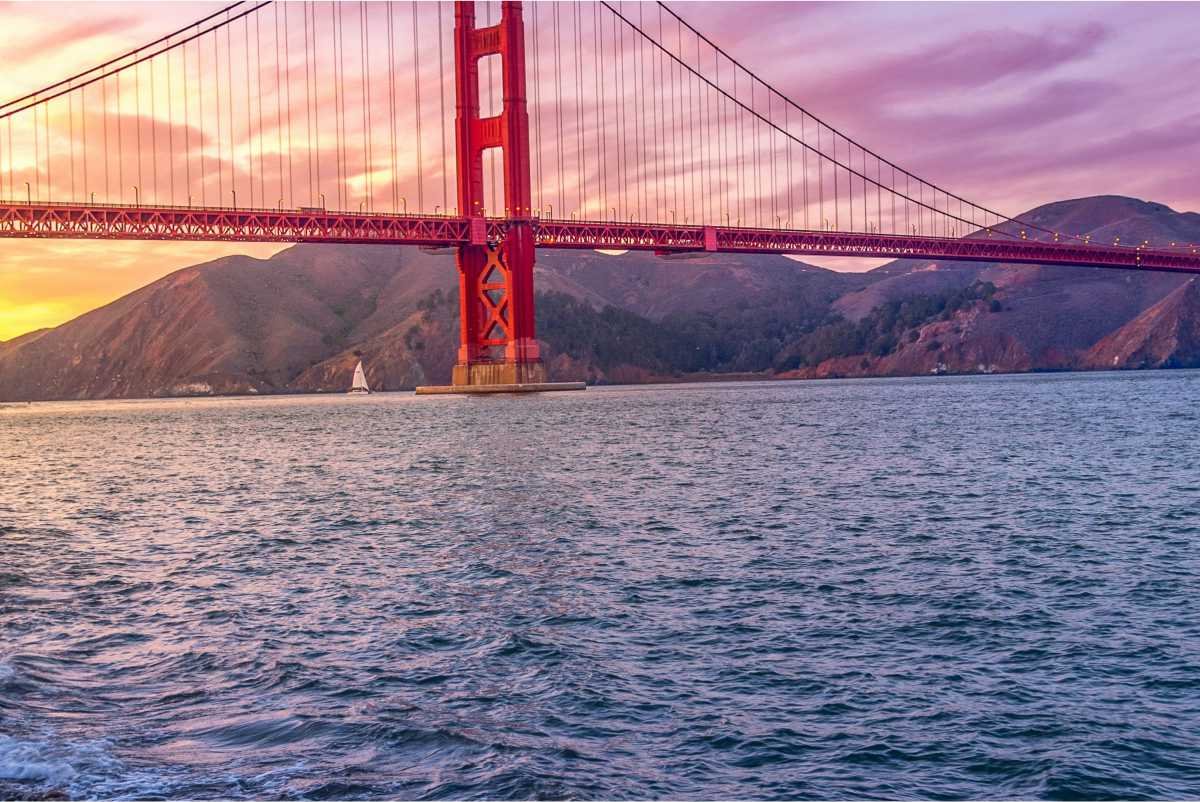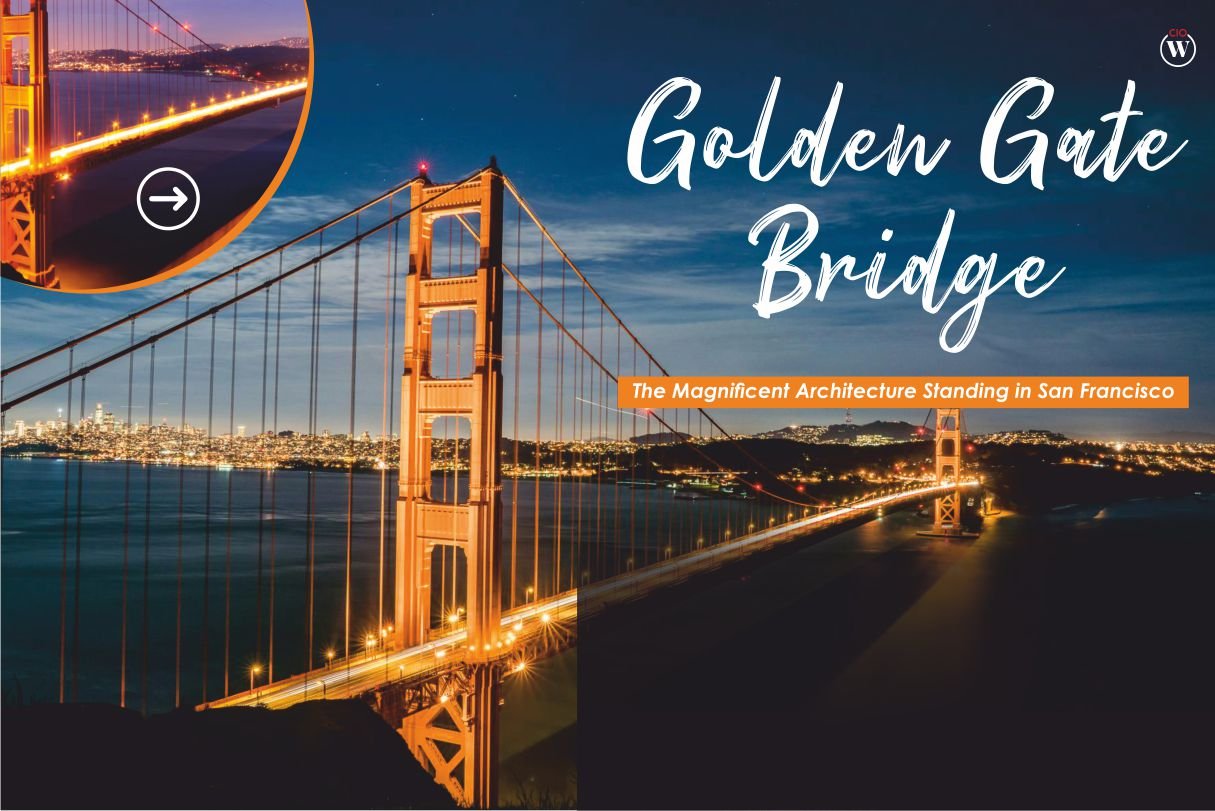Source – Pexels
Amidst the heart of the breathtaking city of San Francisco stands the iconic silhouette of the Golden Gate Bridge, defying the limits of imagination and engineering. This magnificent structure, spanning the Golden Gate Strait, has become a symbol of architectural excellence and a lasting example of human creativity.
The famous suspension bridge connects the city of San Francisco to Marin County in California.
It carries both U.S. Route 101 and California State Route 1 across the strait and is about one mile wide. In this article, we will explore the history and significance that have shaped the iconic monument it is known as today.
The Rich History & Construction
The idea of constructing a bridge across the Golden Gate Strait was first proposed in the late 19th century. The treacherous waters and strong currents made it a challenging task, but the need for a direct link between San Francisco and Marin County was evident. The project gained momentum in the 1920s when the city’s population started to grow rapidly.
In 1921, a renowned engineer named Joseph Strauss presented a unique design for the bridge. His plan called for a suspension bridge with a single span of 4,200 feet, making it the longest suspension bridge in the world at that time. Despite initial skepticism, Strauss’s vision eventually won over the public and the project moved forward.
Construction of the Golden Gate Bridge began on January 5, 1933. The bridge was completed and officially opened to the public on May 27, 1937. It was an instant success, attracting thousands of visitors who marveled at its stunning beauty and grandeur. The Golden Gate Bridge quickly became a symbol of San Francisco and an iconic representation of American engineering prowess.
In the 1980s, the original lead-based paint was replaced with a more environmentally friendly coating. In the 1990s, seismic retrofitting was carried out to strengthen the bridge against earthquake damage.
Why is it Named Golden Gate Bridge?

The Artistic Eye Behind Architecture
The architectural designer of the bridge was Irving Morrow, who played a significant role in the aesthetics of the bridge. The first design by Joseph Strauss was rejected due to aesthetic reasons. After resubmission, Morrow added details such as lighting to outline the bridge’s cables and towers. The engineering design of the bridge was a collaboration between Joseph Strauss, Charles Ellis, and Leon Moisseiff.
Irving Morrow chose the famous International Orange color for the Golden Gate Bridge. He rejected other options, including the US Navy’s suggestion to paint the bridge with black and yellow stripes for visibility by passing ships. Instead, he selected the distinctive International Orange color, which was a primer of burnt red hue, because it blended well with the natural surroundings of the bridge and stood out against the sky and sea. He believed that the warm color of International Orange was visually pleasing and also provided enhanced visibility in foggy conditions for ships.
Challenges The Monument Faced
The beauty of the Golden Gate Bridge stands tall to this date, but it has gone through several challenges, whether climatic or constructional.
The strait where they were building had really strong tides, storms, and thick fog, which made it hard to work. During a fog on August 14, 1933, a big ship crashed into the bridge and caused a lot of damage. The workers also had a tough time because they had to break apart rocks underwater to put strong foundations in place. To keep the workers safe, Strauss invented a special net.
This net saved 19 men from falling and dying while they were building. But on February 17, 1937, the net didn’t work and collapsed when a platform fell. Out of the 13 men on the platform, one managed to jump and get out safely. Two survived the fall into the water, but sadly, 10 were killed. There was one more worker who fell and died during the construction, so in total, 11 workers lost their lives in four years.

The officials quickly closed the bridge to prevent another 600,000 people from crossing it. Afterward, the engineers said that the bridge was designed to flex and bend, so it was never in danger of collapsing.
Interesting Facts About Golden Gate Bridge
- The total cost of the construction of the Golden Gate Bridge was $35 million.
- The famous nature photographer from California, Ansel Adams, was worried that building a bridge across the Golden Gate would make the place look less beautiful. However, when Adams saw the completed Golden Gate Bridge, he changed his opinion.
- The Golden Gate Bridge weighs a total of 887,700 tons. However, during the 1980s, when the roadway deck was replaced, about 12,300 tons were removed from the bridge’s weight.
- During the construction of the Golden Gate Bridge in June 1935, an earthquake occurred while workers were on top of the bridge’s unfinished south tower. One worker described how the tower swayed back and forth, about 16 feet in each direction.
- The Golden Gate Bridge used to be the longest suspension bridge in the world until 1964. However, it is now the ninth-longest suspension bridge. The main span of the bridge, which is the part suspended between the towers, measures 1,280 meters (4,200 feet) in length.
- Since the Golden Gate Bridge was built, it has been closed only three times because of bad weather. Each time, the closure was due to really strong winds that were gusting at or over 70 miles per hour.
- The Golden Gate Bridge has also been closed on several occasions for special visits from important guests. Two of these guests were President Franklin D. Roosevelt and President Charles de Gaulle of France.
- The Golden Gate Bridge is believed to be the most photographed bridge in the world. It is considered a landmark and has received recognition for its engineering excellence.
- In 1994, the American Society of Civil Engineers named it one of the seven civil engineering wonders of the United States.

Tips for Travelers
- Apart from walking across the bridge for free, you can also explore the Golden Gate Bridge Welcome Center. It offers a colorful look at the bridge’s history, as well as the original 12-foot stainless-steel “test tower” used in 1933. It is open seven days a week from 9 AM to 5 PM.
- It can get chilly and windy, especially when the fog rolls in, which often happens in summer. So it’s a good idea to dress in layers or use a hood to keep warm.
- The ideal time to visit San Francisco and the Golden Gate Bridge is between September to November, when the fall season begins.
There are several landmarks from where you can enjoy the breathtaking view of the Golden Gate Bridge. Apart from being a means of transportation, it is also a monument of timeless beauty. It signifies the human will to create wonders. Make this iconic location your next travel destination and mark it off of your bucket list.
